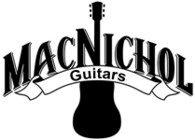Guide to Acoustic Guitar Saddle Corners
You may not have paid much attention to guitar saddle corners in the past, but they do vary. Most guitarists will not care much about saddle corners, but there are some who will. If you are fixing up a vintage guitar and seek to regain the original look as closely as possible, then consider saddle corners to achieve a similar look. Or, if you anchor your picking hand on or near the saddle, consider corners to keep your hand comfortable.
Saddle corners come in three main types: rolling ball, setback, and fillet intersection. Let’s review each.

Rolling Ball Corners
This corner type combines corners into a smooth rounded ball shoulder rather than sharp 90 degree corners. This is the most common type of saddle corner for guitars built after 2000. Relatively little material is removed compared to a setback corner, though.

Setback Corners
This type of corner is more common on pre-2000 guitars. Combines the corners into adjoining faces. Takes off more material from the corner than a rolling ball corner does, which can make the top radius appear tighter than it actually is.

Fillet Intersection
This type of corner is the meeting of filleted faces. The corner will be sharper than the corners mentioned above. If you rest your picking hand on the saddle, or your picking hand frequently touches the saddle corner, you might find that your hand gets poked. If so, consider different corner types, or simply use some sandpaper to round the edges a bit.

